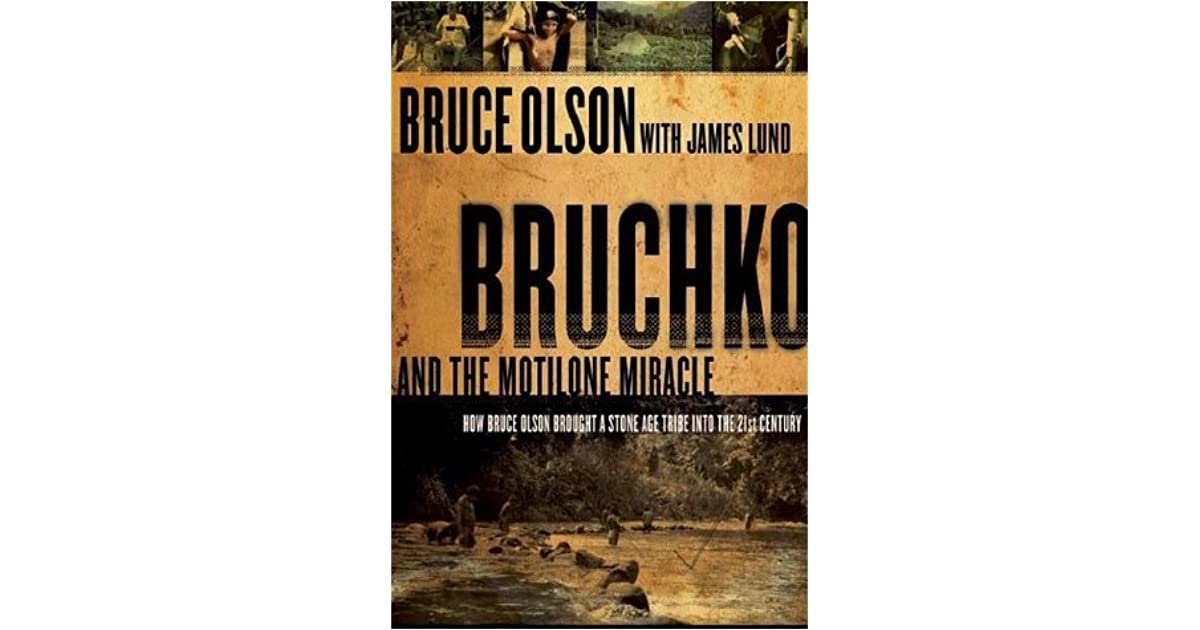Bruce Olson’s autobiography Bruchko contains much more than his life story. Olson’s work with the primitive Motilone Indian tribe of South America brings up missiological questions of utmost importance.
– What does the Gospel look like in a culture that is radically different from ours?
– What traditions and customs can a culture preserve while maintaining a Christian identity?
– How much do missionaries need to be immersed in a culture before they can effectively share the gospel?
Today I will summarize Olson’s story, and then tomorrow, I will lay out some of my thoughts on Olson’s contextualization of the Gospel.
Bruchko tells the story of Bruce Olson’s difficult journey to the dangerous Motilone Indian tribe of South America, his assimilation into Motilone culture, and his role in the entire tribe’s conversion to Christianity. The book begins with Olson’s conversion experience. Raised in a legalistic Lutheran church with parents who were cold and indifferent to the Gospel, Olson embarked on a quest for genuine Christianity. He studied Greek and Hebrew and began reading the Bible in the original languages. Olson feared the judgment of God and was eventually driven to his knees in repentance and faith. His Lutheran church offered no support for Olson’s newfound personal faith, so he began to attend an interdenominational church.
Touched by missionary reports, Olson felt God’s call to minister to Indians in South America. When he was nineteen, Olson embarked on the journey that would change his life forever. He headed to South America with little more than the clothes on his back. Olson’s first contact with local missionaries was disheartening. The missionaries looked at Olson as an outsider and refused to include him in mission work because he had come without sponsorship. Instead of doing mission work from the beginning, Olson attended a university in Venezuela and began learning about the South American Indian tribes.
Months later, Olson set off into the jungle looking for the Motilone Indian tribe. He first came across the Yuko Indians. After spending a year with the Yukos, he ventured deeper into the jungle to find the Motilones. His initial encounter with the Motilones was frightening. He was pierced by an Indian arrow and later almost executed by the Motilone chief. Olson endured dysentery, hepatitis, and a chronic problem with parasites during his first few months in the jungle. However, none of these trials convinced him to turn back. Instead, they emboldened him to continue his work and to take joy in this time of “suffering” for the Lord’s work.
Upon his return to the Motilones, Olson received the name “Bruchko.” He began to accompany the men on their fishing and hunting expeditions. He slowly adjusted to the Motilone diet, and he began to pick up on the tribe’s tonal language. Still, he faced periods of discouragement as he did not know how to share the Gospel within this foreign and difficult context.
The turning point of the book comes from Olson’s befriending of a young Motilone warrior – Bobarishora (“Bobby” for short). As Bobby became a leader of the tribe, Olson’s influence expanded and his opportunities for service were multiplied. One such instance took place when an epidemic of pink eye hit the tribe. Olson obtained antibiotic cream for the Indians, only to find out that the witch doctor refused the outside help. In an ingenious attempt to win over the witch doctor, Olson purposefully contracted pink eye and allowed the witch doctor to treat him with his own antibiotic cream. From that time on, the witch doctor began to use Western medicines and the tribe took steps to better sanitation.
Olson’s opportunity to share the gospel came shortly after the experience with the witch doctor. In the jungle, he came upon several Motilone Indians who were digging a hole in an attempt to find God. Olson began to teach them about the incarnation and Jesus’ substitutionary death on the cross. In order to drive home the biblical teaching about God becoming man, Olson told the Motilone fable about a man who became an ant. Bobby was the first Motilone to convert to Christianity, but it took several months before the rest of the tribe would make their decision. Bobby, as the tribe’s leader, sang the Gospel story as a chant, and his testimony influenced the other Motilones to put their trust in Christ.
From the moment of the tribe’s conversion, Olson speeds up his account and skips over years with very little detail. Bobby married and had children. Olson met and dated a girl named Gloria, who decided to work with the Motilones. Tragically, she was killed in an automobile accident shortly before they were to be married. Olson was also involved in international organizations as an advocate for the Motilones and their traditions. Olson’s discipleship of the Motilone tribe continued through his efforts to translate the Gospel of Mark and then the New Testament. Olson records his difficulties in translating the Bible into a tonal language and oral culture.
The final chapters take on a solemn note, as encroaching civilization begins to threaten the Motilone way of life. The book ends with the tragic death of Bobby at the hands of outlaws. An epilogue provides additional information on Olson’s work with the Motilones and the tribe’s preservation of its ancient traditions.
